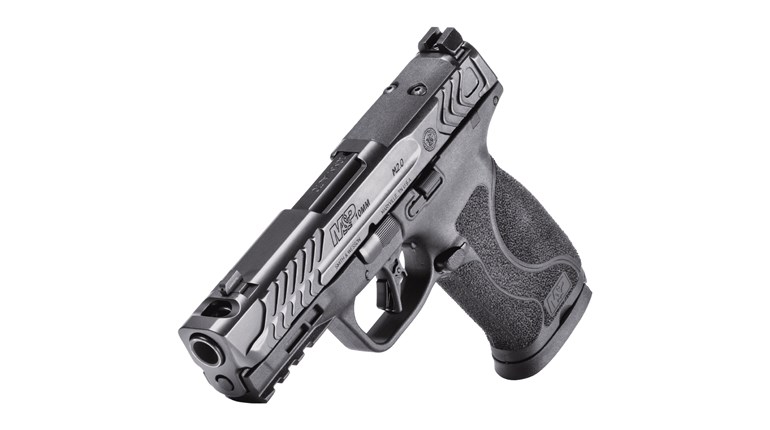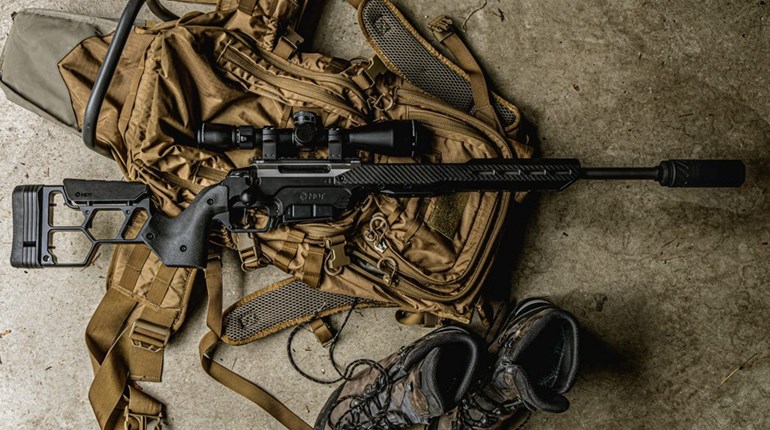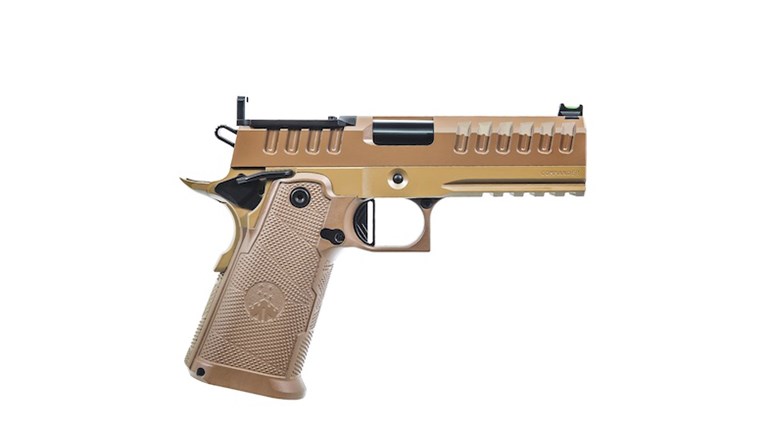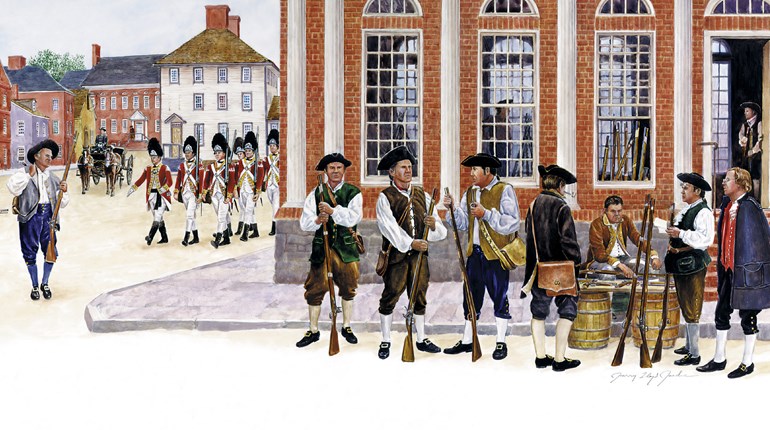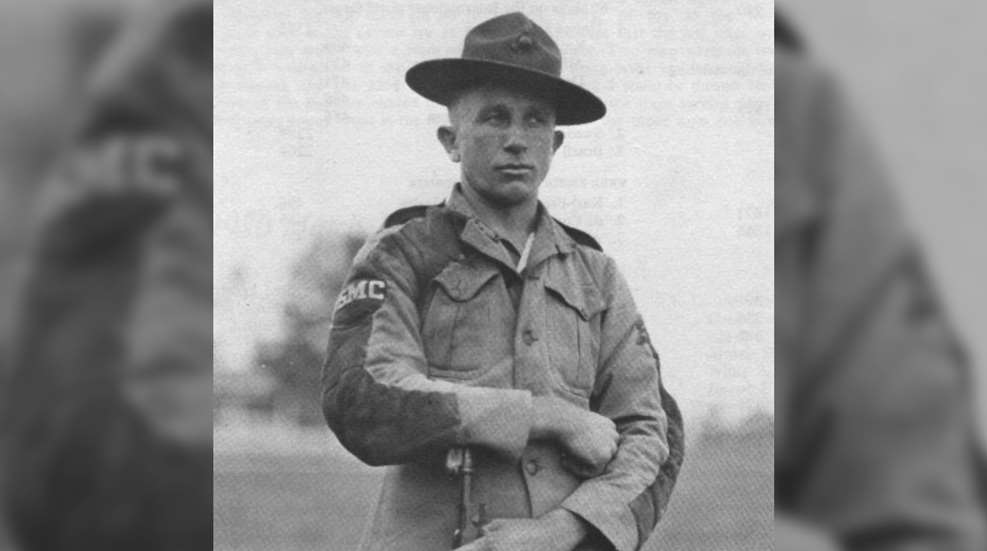
The below is an excerpt from the 1978 book, Olympic Shooting, written by Col. Jim Crossman and published by the NRA.
1920—Antwerp: Everything But The Kitchen Sink
By Colonel Jim Crossman
When the American shooting team left Antwerp and the 1920 Olympic Games, they took with them everything but the kitchen sink—or so it seemed. Out of 11 team matches, the Yanks took home 8 gold medals, 1 silver medal and 1 bronze medal, failing to place in only 1 team event—the running deer doubles. From some 10 individual matches, 5 gold, 3 silver and 5 bronze medals were taken west across the Atlantic, with the U.S. shooters missing awards in the running deer doubles and singles matches, and, surprisingly, in the 300-meter prone event.
The Germans had long wanted to hold the Olympics. Kaiser Wilhelm II was much interested in the Olympic movement and was one of the earliest recipients of the Commemorative Medal. But the Germans wanted to do it right and withdrew their bid in 1908. They were high on the list for 1912, but when the offer was made to them, they refused, since their preparations had only started in 1909 and they would not be ready by 1912. But they would be ready by 1916 and so the sixth Games were to be held in Berlin. By 1916, however, the Germans and other nations were at war and the Games were canceled. This was unlike the original Games, when wars were canceled for the Games, rather than the reverse.
The Belgians had real cause to be proud of the way the Games ran.
After the signing of the Armistice in November 1918, no one was interested in holding Olympic Games. But a few months later, Belgium, under the dynamic leadership of Count Henri de Baillet-Latour, proposed that the seventh Games be held at Antwerp. With admiration for the plucky little nation which had just finished four years of war and occupation by the Germans, the International Olympic Committee gave them the Games in April 1919. Considering the very short time for the planning and preparation and the condition of the country, the Belgians had real cause to be proud of the way the Games ran. Things were not luxurious and there were many minor hitches, but they were successfully concluded.
Immediately on hearing of the new Games, the American Trapshooting Association started work on an American trapshooting team. The ATA announced that the team would be selected from the shooters with high average on 2,000 or more registered targets in 1919. Money for the team was to come from a tax of ¼¢ per bird in registered tournaments. By early 1920 it was evident that this money-raising scheme was a flop. The ATA, at that time still organized, financed and run by the shooting industry, appointed a committee of amateurs to look into the matter, with Jay Clark as team captain and head of the committee.
It was finally decided to pick the team from past records and the results of special Olympic-style shoots and to finance the team by public subscription. Frequent requests were made in the shooting magazines of the time for donations to the fund. The fund had to be considerably larger than for the rifle and pistol shooters, as the shotgunners did not travel on transport but on commercial ships. Too, the group first went to England for a couple of weeks of shooting in the English championships. Although it took some effort, a fund of about $10,000 was finally raised.
After considering the factors of shooting ability, experience, temperament, ability to stand pressure and the many other things necessary for a championship aggregation, Captain Jay Clark and his committee finally selected the U.S. Olympic Trapshooting Team, composed of:
U.S. Trapshooting Team
- Mark P. Arie, Champaign, Illinois
- Horace R. Bonser, Cincinnati, Ohio
- Jay Clark, Jr., Worcester, Massachusetts
- Ben S. Donnelley, New York, New York
- Forest W. McNair, Houston, Texas
- Fred Plum, Atlantic City, New Jersey
- Frank Troeh, Vancouver, Washington
- Frank S. Wright, Kenmore, New York
This was a powerful team and the eight members had shot at 122,000 targets in the previous five years with an average of over 95 percent. Frank Troeh, for example, had the high average in the country in 1918 with 97.4 percent on 6,800 birds, and in 1920 with 97.5 percent on 8,800, while Mark Arie took the honor in 1919 with 97.8 percent on 3,000 birds. The last-minute news that the gun could be held in any position when the bird appeared delighted the Americans. Not knowing any differently, they had been assuming that the rules would be those used at Stockholm which called for the gun to be off the shoulder when the bird appeared, not a method commonly used here.
On previous overseas trips, trapshooting teams had rigged a trap on the ship and practiced on the voyage. At the last minute, however, the owners of the ship on which the 1920 team traveled refused to allow any ammunition aboard, so the team spent nine days viewing the beauties of the ocean. The layoff did not seem to hurt them, because at the British championships they won about everything possible and set a number of new records.
The team paid a visit to the clay bird factory, where they gave the plant operator some lessons in how to make breakable birds.
The English birds had the reputation of being very hard, and the Americans soon found the reputation was well deserved. Shortly thereafter, the team paid a visit to the clay bird factory, where they gave the plant operator some lessons in how to make breakable birds. To the infinite delight of the English, birds from that plant immediately became vastly improved.
Pistol and revolver shooters found four matches on the 1920 program, two team and two individual. One pair was over the familiar free pistol course, 60 shots, 50 meters, on the International target with its tiny 10-ring only 50 mm (2 inches) across. The other team and individual pair were fired on the same target at 30 meters, 30 shots with the army pistol or revolver.
The pistol team was financed by the United States Revolver Association, through public subscription, with large donations by the Colt and Smith & Wesson gunmaking firms. Tryouts were held at the Marine base at Quantico, Va., near Washington, D.C. Members of the team were:
U.S. Revolver and Pistol Team
- Team Captain—Lt. Col. O.F. Snyder, Washington, D.C.
- Supply Officer—J.A. Baker, Jr.
- Dr. Howard A. Bayles, Port Chester, New York
- Raymond C. Bracken, Columbus, Ohio
- George F. Fiske, Jr., Chicago, Illinois
- Karl T. Frederick, New York, New York
- Lt. Louis J. Harant, Washington, D.C., U.S. Army
- Sgt. Michael Kelly, U.S. Engineer Corps
- Alfred P. Lane, New York, New York
- Dr. James H. Snook, Columbus, Ohio
Traveling on a different ship than the trapshooters, and with the shipping company taking a more liberal view on ammunition, the handgunners rigged up a target on the rear of the ship and practiced during the 11-day crossing. Once ashore, they managed to shoot on an improvised range in the country for a few days, but this was not too successful and they finally went down to Beverloo Camp, 40 miles east of Antwerp, where most of the rifle and pistol matches were to be held. The few days of practice there before the matches showed them some of the tricks of range and the weather.
Quantico, Va., had also been the scene of the tryouts for the rifle team, sponsored by the National Rifle Association of America. The five-day shoot, held at ranges of 300 meters and 600 meters, saw nearly 100 of the country's best trying for those prized spots on the Olympic squad. Repeaters from the 1912 team included Sgt. Harry Adams, Capt. Fred Hird, Sgt. Joe Jackson, Capt. William Leushner (also a member of the 1908 team), Dr. Neil McDonnell and Cmdr. Cy Osburn. This gave the squad a strong nucleus of experienced Olympic shooters which, added to the power of the new shooters, gave promise of the best team ever. The team roster was:
U.S. Team Officials
- Team Captain—Lt. Col. George C. Shaw, Inspector General's Department, U.S. Army
- Coach—Maj. W. Dulty Smith, U.S. Marine Corps
- Adjutant—Capt. Paul W. Mapes, Infantry, U.S. Army
- Supply Officer—Maj. Wallace P. Wheeler, Infantry, U.S. Army
- Liaison Officer—Col. William A. Libbey, National Guard, New Jersey
- Medical Officer—Lt. Cmdr. William N. McDonnell, U.S. Navy
U.S. Rifle Team
- 1st Lt. Thomas G. Brown, 41st Infantry, U.S. Army
- Capt. Arthur D. Rothrock, 29th Infantry, U.S. Army
- Cmdr. Carl T. Osburn, U.S. Navy
- Sgt. Morris Fisher, U.S. Marine Corps.
- 1st Lt. Lloyd S. Spooner, 47th Infantry, U.S. Army
- Sgt. Harry L. Adams, 11th Cavalry, U.S. Army
- Capt. Fred S. Hird, Quartermaster Corps, U.S. Army
- Maj. Elmer G. Lindroth, 32nd Infantry, U.S. Army
- Mr. Joseph T. Lawless, Waltham, Massachusetts
- 2nd Lt. Joseph E. Jackson, U.S. Marine Corps
- Sgt. Ralph M. Henshaw, U.S. Marine Corps
- Capt. William D.F. Leushner, 51st Infantry, U.S. Army
- 1st Sgt. Dennis Fenton, 35th Infantry, U.S. Army
- Gy. Sgt. Ollie M. Schriver, U.S. Marine Corps
- Lt. Cmdr. Willis A. Lee, U.S. Navy
- 1st Lt. Perry S. Schofield, Infantry, U.S. Army
- Mr. Lawrence A. Nuesslein, Washington, D.C.
The rifle and pistol teams went over with good equipment. K.K.V. Casey once again helped to select the best Springfield rifles. And once again an ammunition competition was held to pick the best. When the ammunition entries were tabulated, it was found that Remington had two entries, Frankford Arsenal two, Winchester one and Western one—but none from United States Cartridge.
Although the metal fouling tendency of the cupronickel jacket was well known and disliked, only two of the entries had the superior gilding-medal jacket.
The ammunition measurement used for selecting the ammunition was mean radius. Like mean vertical deviation, used in previous tests, mean radius was an averaging measurement and was obtained in a similar manner. The center of impact of the group was marked on the target and the distance of each shot was measured from that center. All the measurements were added together and divided by the number of shots. Mean radius thus took into account the effect of wind on the bullet.
To minimize the effect of wind, the 10-shot test groups were fired very quickly, often in 15 seconds. At the end of the 30 10-shot groups at a range of 600 yards, the Remington Arms-UMC 180-grain entry had won, with an average mean radius of 3.411 inches, just ahead of the Frankford Arsenal 170-grain bullet which gave 3.661. Strangely, the Frankford cartridge gave slightly less mean vertical deviation than the Remington. The winning flat-base bullet was given a velocity of 2,550 f.p.s. using Hivel powder. This was a direct descendant of the old NG-S2 powder used in the first Olympic competition.
Some special Springfield rifles were made up with set triggers for the free rifle events, while Stevens and Winchester provided .22 rifles for the miniature rifle events. The team used United States Cartridge Company .22 ammunition. For the single-shot running deer event, the Savage Arms Company provided rifles chambered for the .250-3000 cartridge, while for the doubles Remington provided M8 autoloading rifles in .25 Remington caliber. Just before sailing time, a couple of fancy heavy Winchester Schuetzen rifles appeared on the scene, but when examined in Belgium they turned out to be chambered for the .22 short cartridge and were therefore useless.
Read Part 2 of our look back at the shooting events of the Antwerp 1920 Olympic Games. And subscribe to the free Insider newsletter for the latest updates.
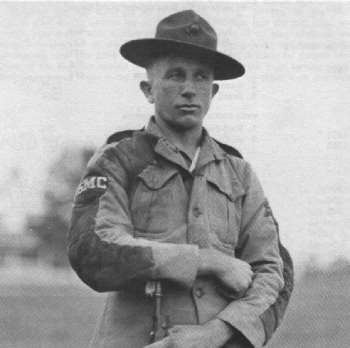
Photo: Chief Warrant Officer Morris Fisher, U.S. Marines, won an astounding two individual gold medals and three team gold medals during the 1920 and 1924 Olympics. A dead center in the 10-ring at 300 meters is still called a "Morris 10."
Read more: Athens 1906 Olympics: But Not For Record













